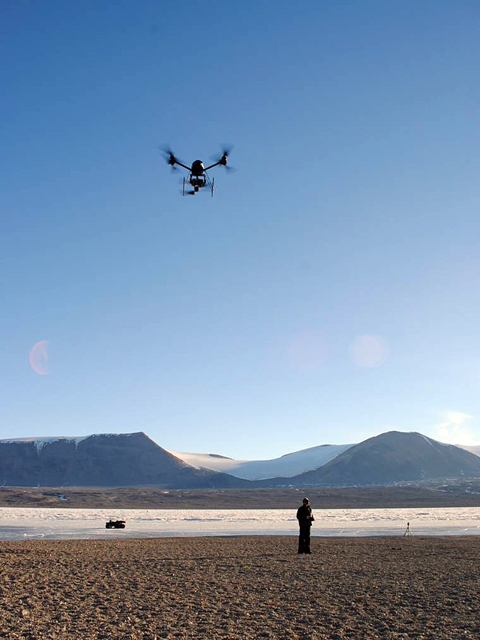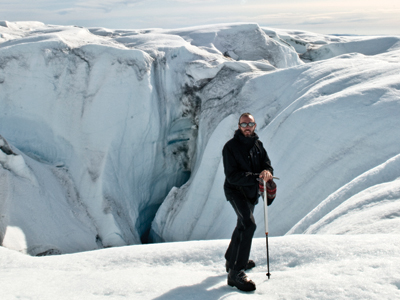|
CyberinfrastructureNSF program seeks to promote technologies for polar regionsPosted April 5, 2013
Marco Tedesco CIF21 will offer a comprehensive, integrated, secure and sustainable cyberinfrastructure with the intent of accelerating research and education, as well as supporting new functional capabilities in computational and data-intensive science and engineering. Tedesco responded to an email interview about the Polar Cyberinfrastructure Program and its potential impacts to the U.S. Antarctic Program 1. You were recently appointed program director of the Polar Cyberinfrastructure Program. What is the purpose of this program and what is your role? My role is to manage existing awards, select new awards through solicited and unsolicited solicitations, work collaboratively with other programs, divisions and agencies to provide service to the scientific community, and in particular the polar community. I am committed to support ideas and initiatives of scientists and engineers involved in Antarctic studies that could benefit from the collaboration and interaction between polar research and cyberinfrastructure. I am thinking, particularly but not exclusively, to early career scientists and those who grew up when “cyber” was not a concept from the future but a fact from the present. 
Photo Credit: Michael San Clements
Marco Tedesco operates a remote-control helicopter in the McMurdo Dry Valleys that sports a camera and GPS that can allow him to geo-reference images.
2. What was the impetus behind the creation of a Polar Cyberinfrastructure Program? The program was created a few years ago to increase the benefits of a coordinated and synergic interaction between cyberinfrastructure and polar research. 3. What sort of opportunities are available for grantees of the U.S. Antarctic Program? How can scientists and engineers get involved? Scientists and engineers should submit their ideas through the annual Antarctic solicitation 4. How has polar research benefited in the past from advances in cyber technology? Cyber technologies have been positively impacting polar research in many ways: an increasing number of sophisticated sensors have been deployed in both the Arctic and Antarctic regions; enhanced computational power has allowed polar scientists to portray the present state of the polar regions, to unveil past trends and project future changes of process-driving quantities; and sharing of information, data, publications through virtual networks has allowed interdisciplinary and cross-disciplinary research and has expanded the boundaries of education. 5. What sort of advances in cyber technology and infrastructure do you see coming in the next five to 10 years? I like to think that for modern-day scientists and engineers, cyberinfrastructure can be thought in the same way that we, as citizens, think about physical infrastructures providing us electricity, water, transportation, etc. I hope that over the next five to 10 years the program will be able to support innovation and education through the integration of updated computing, data management, information, networking, sensor and software technologies into polar research. Data-enabled discoveries, the storage and distribution of large complex data sets and the continuity to access long-lived publicly accessible data sets are some examples of potential long-term outcomes. The program will interact with other NSF ongoing cyberinfrastructure activities, such as EarthCube 6. What is your scientific background, and what sort of research have you done in polar regions? I graduated in electronic engineering in Italy and took my PhD in theoretical electromagnetic modeling of snow-covered surfaces for remote sensing applications. I spent my PostDoc and early career years at NASA Goddard Space Flight Center 7. Anything you’d like add? Sure: questions concerning the program can be addressed to mtedesco@nsf.gov or call 703.292.7120. |



For USAP Participants |
For The Public |
For Researchers and EducatorsContact UsU.S. National Science FoundationOffice of Polar Programs Geosciences Directorate 2415 Eisenhower Avenue, Suite W7100 Alexandria, VA 22314 Sign up for the NSF Office of Polar Programs newsletter and events. Feedback Form |



